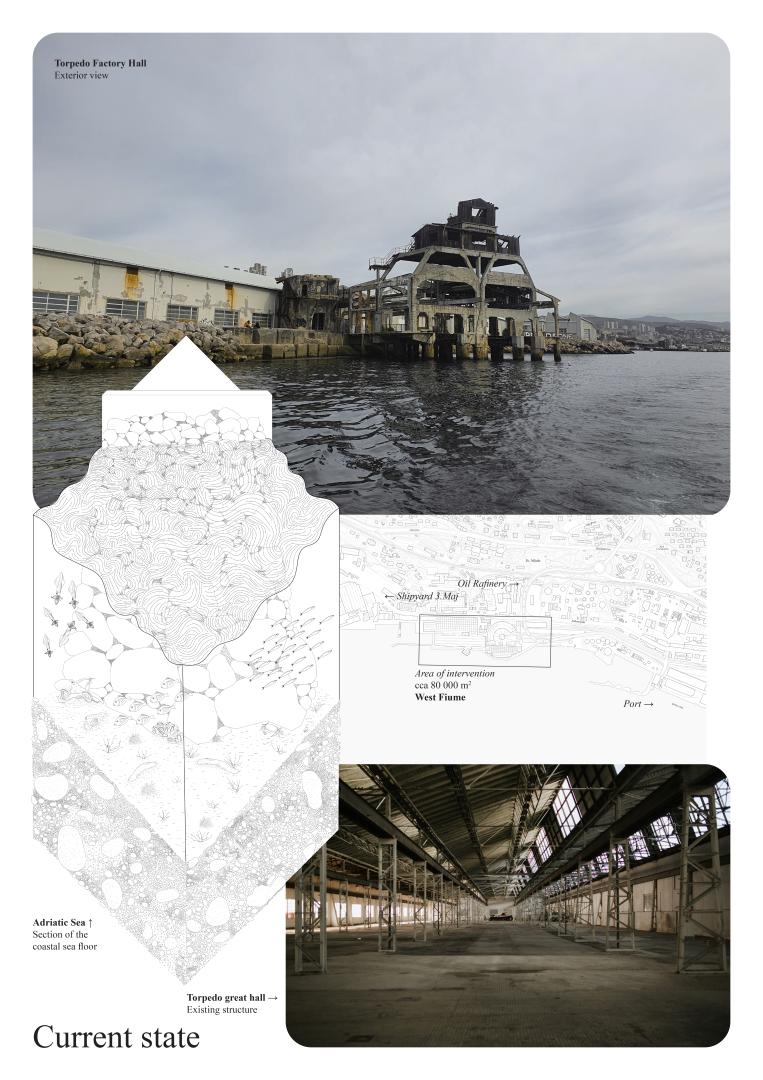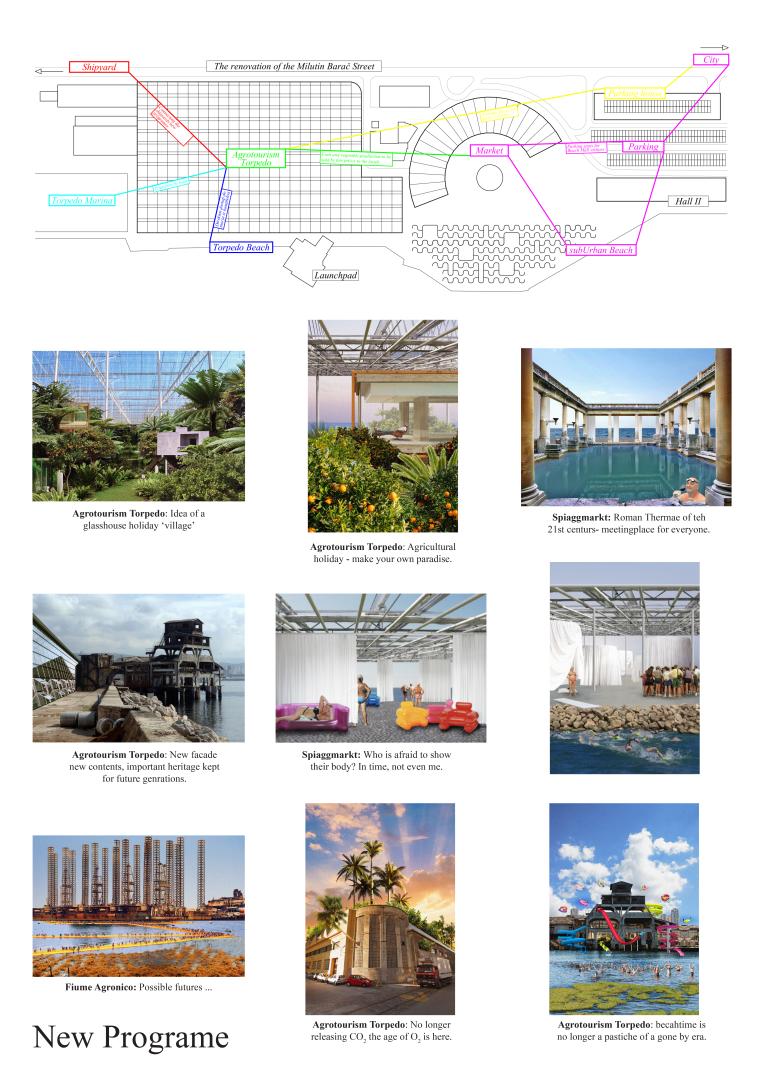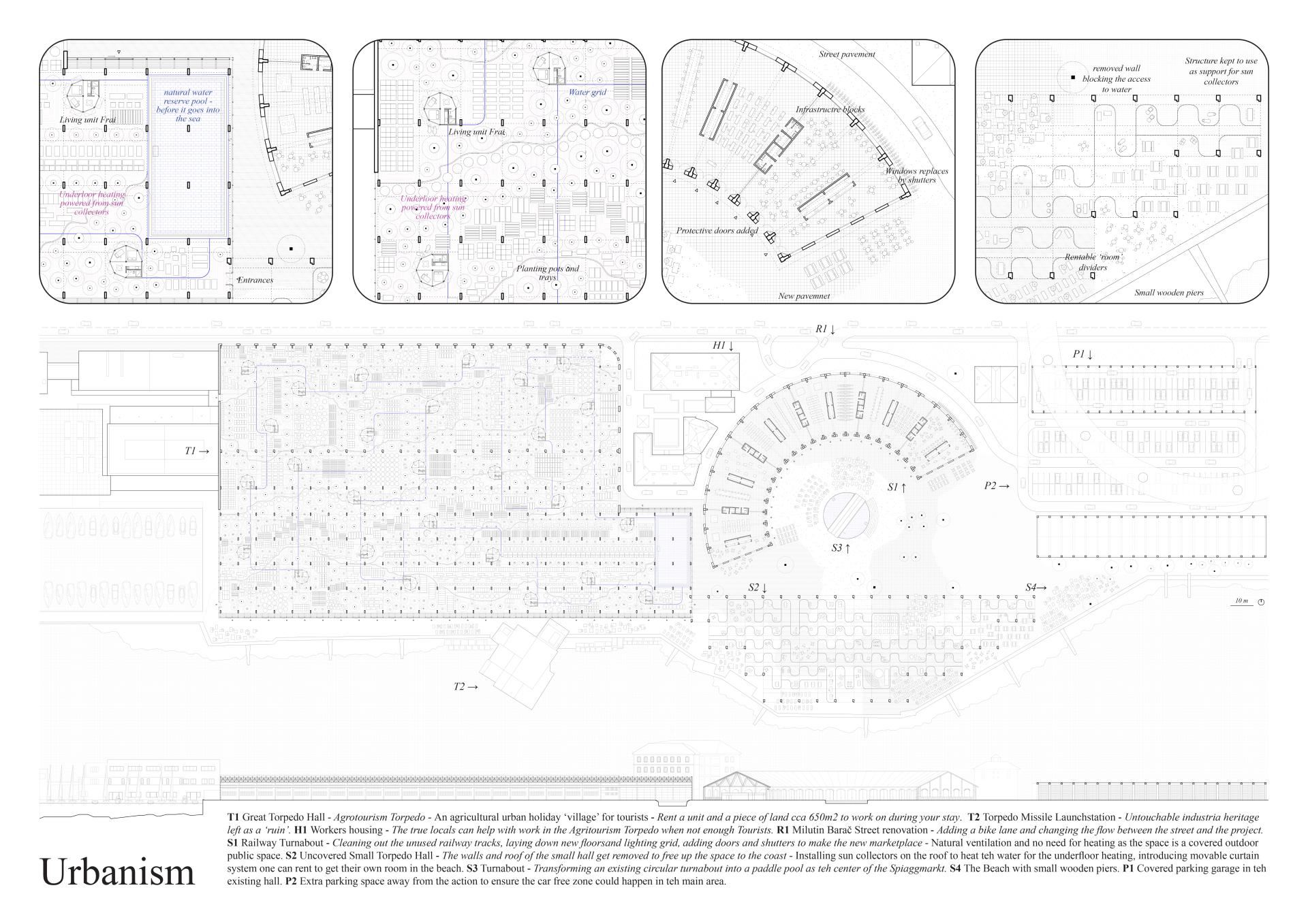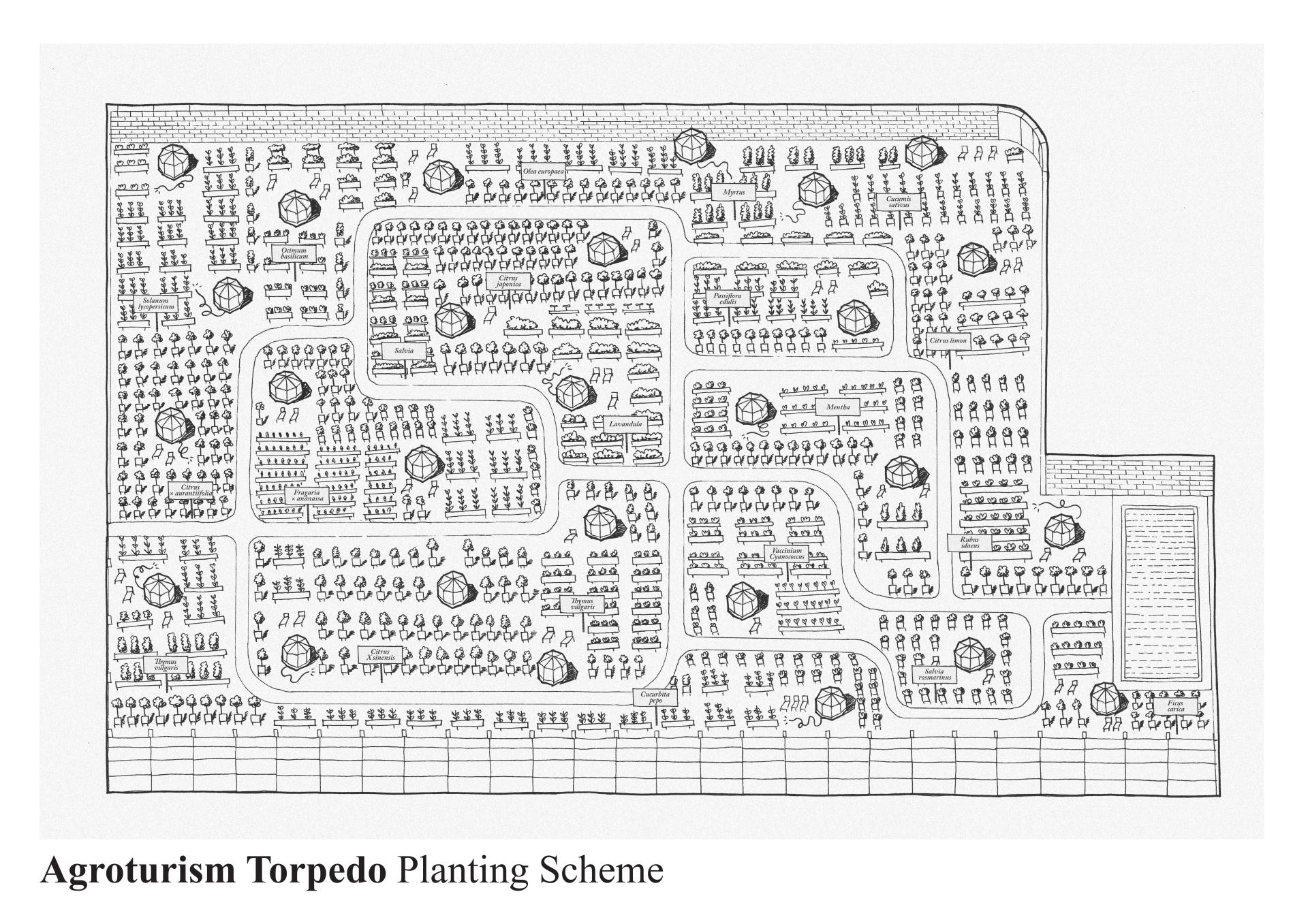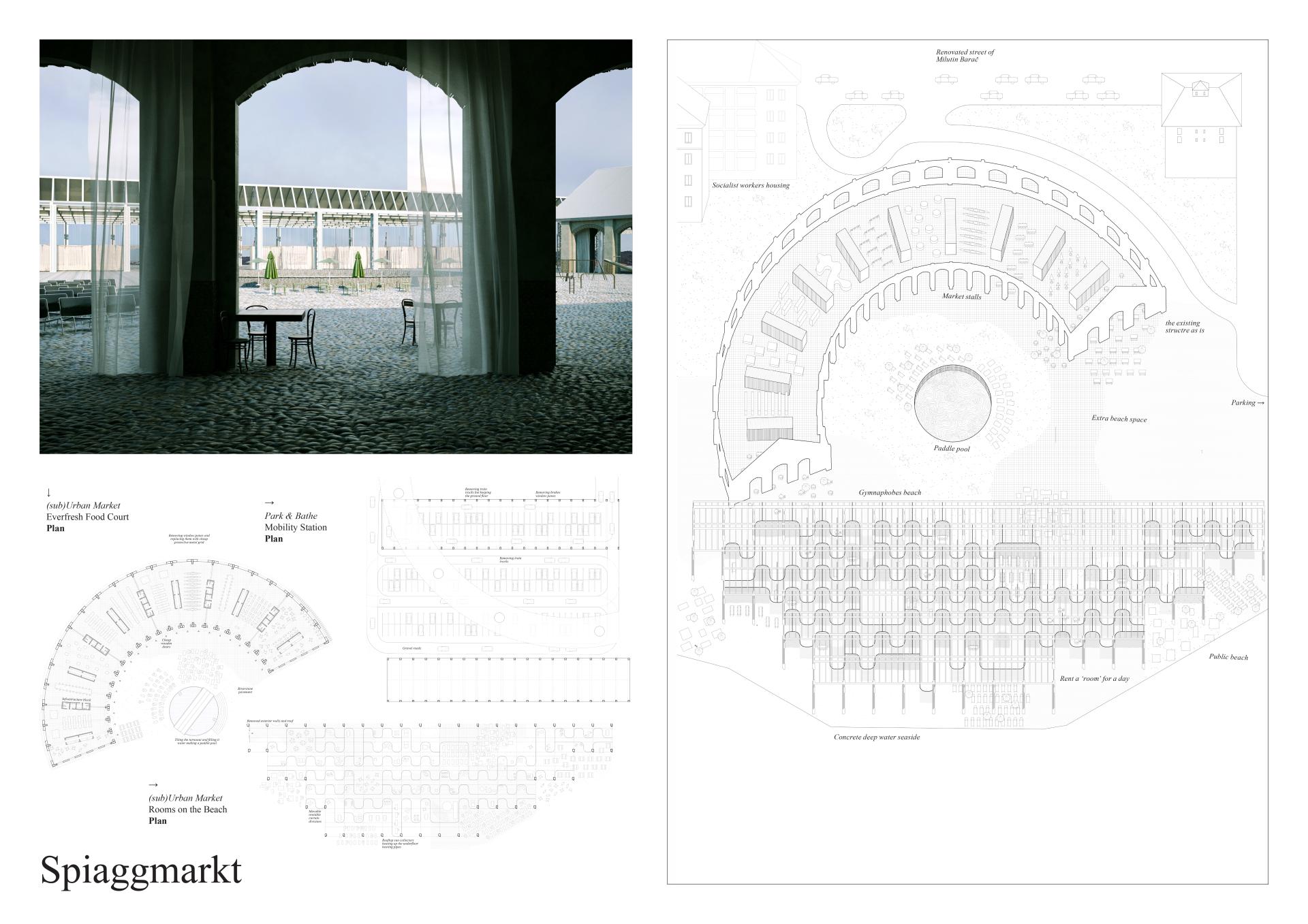Fiume Agronico
Basic information
Project Title
Full project title
Category
Project Description
Imagine going to the seaside and have garden to take care of full of fruits and vegetables, herbs and flowers. Imagine you can get it without having to purchase your own house. Imagine that next to it is a city beach where you can meet the locals and a market where your fresh produce is sold. And imagine everything drinking in most unique atmosphere in Europe – an industrial bucolic garden paradise surrounded by fantastical industrial structures and unique topological terrain of Rijeka.
Geographical Scope
Project Region
Urban or rural issues
Physical or other transformations
EU Programme or fund
Which funds
Description of the project
Summary
The story of Fiume Agronomico (area of cca. 80 000 m2) starts in the opposite direction, its industrial past with an environment heavy industry like the Torpedo factory, the nearby port, oil refinery and the shipyard, all of them at one point in time being the largest factories of Europe within their branch. A grandiose industrial past is superposed in the project with the renovation of the abandoned Torpedo Hall and the adjacent railway turnabout, buildings glued onto the coast, limiting access to the sea, that in Rijeka is almost non-existent due to the port’s activity and years of municipal ‘war’ over jurisdiction of coastal land.
Torpedo: The proposed programmes replace the production of the Torpedo missile, an invention responsible for tonnes of CO2 released into the atmosphere with Agritourism - a place where one comes to regenerate through work, community and participating in an industry producing O2 rather than CO2.
Spiaggmarkt: Unused railway turnabout becomes a city beach layered with sun collectors as well as an informal marketplace. The hybrid both in name and in use The Spiaggmarkt is a local’s and tourist’s meeting place of reversed roles. The worker - tourist’s produce stocks up Rijeka’s people instead of the usual gentrification processes where local economies rise and fall with the ups and downs of tourism’s fleeting whims.
Avoiding land speculation and answering to a diminishing urban population the project thinks about ecology, community, and the economy as connected foundations of a sustainable future development. Freeing up publicly owned land of the railway company to the public beach and making the tourists work in their favour is perhaps the only benevolent act possible in the only coastal Croatian town that doesn’t make its yearly bread from tourism. The unusual atmosphere of Fiume can be attributed to both a unique topological/ architectural as well as social and economic historical condition.
Key objectives for sustainability
Environmental struggle can be exemplified in the project low tech – low-cost design intentions based upon three key pillars: 1. Never waist embodied energy or labour if not necessary and make best use of the existing infrastructure. 2. Always think about the long-term future-proof functioning of the project. 3. Create an inclusive environment of equal opportunity with universal benefit.
The project makes use of the expansive existing structures without building any new volumes or demolishing existing ones. It rethinks envelopes in relation to the natural elements – using industrial (some already existing in the original design of the buildings) systems to wire efficient electrical grids and water fixtures (getting water from a naturally present channel of spring water running underneath the building), equipping the facades and roof with a glass envelope and a system of fabric shading to regulate air flows and natural light. Using the roof of the adjacent ‘small torpedo hall’ to install sun collectors (cca. 3000 m2) heating the water for sanitary use and underfloor heating means the energy use of the torpedo complex is minimal and the market (in the railway turnabout) spends no energy to heat as it is used as a covered outdoor space.
The Torpedo is a factory of fruits and vegetables- the only agricultural land in the city that allows a year-round supply of otherwise seasonal products without any transportation related carbon footprint.
Spiaggmarkt: The neighbouring semicircular marketplace hall sells the fresh produce of the glasshouse hall to the locals to close the loop – where once the locals had to work for the tourists now the tourists (a different kind of a tourist, one interested in spending their time productively but in touch with both the environment and the local population) work for the local’s immediate (economic) gain and their own (mental) piece of mind.
Key objectives for aesthetics and quality
The romantic notion of a little seaside house with a respectable garden one visits every weekend from May to October and for three weeks during summertime is a all to common dream for most mainland Croatians and neighbouring Slovenians, Italians, … The real estate market of holiday houses has shown itself destructive for local property markets and the country’s demographic. With properties in coastal towns too pricey the young population leaves as they are not able to afford living in these cities. The coast then turns into a theme park servicing foreigner’s idea of vacation aesthetic. The project aims to rethink the dream, acknowledging the new generation of tourist to have different aspirations when it comes to their impact on local land and population. The bucolic dream appears in all highly urbanized historic societies as people who grew up in urban environments without feeling personally attached to the ‘country’ feel an innate desire to live ‘in the natural’. It is because everyday lives of urbanites are so foreign to the rural lifestyle and to everything that signifies a natural living that the pastoral landscape becomes the object of desire. A certain trend is appearing amongst the creative middle classes and a certain eagerness to take thing into their own hands, especially relating to food production. This job is taken by the Agrotourism Torpedo’s techno-bucolic architectural expression of industrially driven food production with just enough ‘naturality’ to convince the new age nature lovers of its authenticity. It resonates that the ecological solution looks more like a factory aimed at producing oxygen rather than a lonely wooden shack in the middle of nowhere only sustaining oneself rather the entire city/region.
Key objectives for inclusion
What do we want? From a city, form a tourist, from working, from vacationing, from bathing to shopping, to participating, to providing, to consuming? In truth, nobody knows for sure until faced with the opportunity to choose and to consume or not to consume, the latter being far more difficult of a choice than the former. The task of the architect has morphed from building beautiful and functional objects to facilitating spaces of alternate human relations- amongst individuals as well as relation to the surrounding material world – visualising what it takes to feed the city, the work, the material, the energy used reflects the impact the presence of heavy industries and mass migration had on the local population in the last century.
The Torpedo building can become one of the answers to how the relation of the local and the foreigner can be brought into the not so roaring twenties of the 21st century. To coexist in an organic way that doesn’t disturb the inclusive qualities of the current urban atmosphere is to suggest systemic renovation of the industrial sites into spaces for the ones who didn’t have a space until now.
The Spiaggmarkt introduces another kind of beach, that can’t be found anywhere on Croatia’s 1,777.3 kilometres of coast – A gymnophobes beach - a beach for those who find it difficult to expose themselves due to troubled life circumstance or the trauma of social media’s pressure on the perfect body. It’s a one-off beach- different to any other as is different the image of Rijeka to other coastal towns.
Both the Torpedo and the Spiaggmarkt bring to Rijeka a different type of tourist as they both look different and have different rules of engagement, first contribute, and then visit – in exchange you get a surreal holiday experience – in a one of kind glasshouse you can live in with a fantastical garden and free local produce. To be in the beach the social rules are different- poor and rich alike must invite you to their space – the rentable curt
Physical or other transformations
Innovative character
Fiume Agronico combines many of Europe’s contemporary issues into a single architectural project. Ecology, self-sufficiency, left over industries, urban population decline of smaller cities, mass tourism, troubled real estate markets, weakening of local economies, coastal appropriation.
Torpedo: It provides an answer in the form of a minimal intervention to the built fabric of the existing structures needed to invigorate them with an entirely contemporary take on a vacation ‘village’ in fact an industrial compound producing year-round supply of otherwise seasonal fruits and vegetables with borrowed labour from tourists in searched of different kind of holiday. The Argrotourism Torpedo is a productive urban holiday ‘village’ for those who wish to live the techno-bucolic dream of the today’s high pressure sedentary office lifestyle. The applied solutions are environmentally friendly due to the decision to renovate the existing buildings and the energy saving mechanical equipment, not to mention the oxygen producing agriculture activity inside. They chart a new aesthetic course embodied in its industrial large-scale solutions to the new building elements and their interconnectivity keeping some romanticism alive with the lush glasshouse garden.
Spiaggmarkt: Alongside it a beach (spiagga: italian) and a marketplace (markt: german) provide the only bathing space for the local population (suburban beach) and a space for gymnophobes to go to the beach on their own terms.
The intricate relationship between the locals and the tourists is cultivated through non-hierarchical social structures (the local doesn’t work for the tourist, but the tourist doesn’t work for the local as well, they both exist within their still benefit from each other). Together the three aspects build the foundation of future development focused of the wellbeing of everyone included in supply and demand’s processes.

